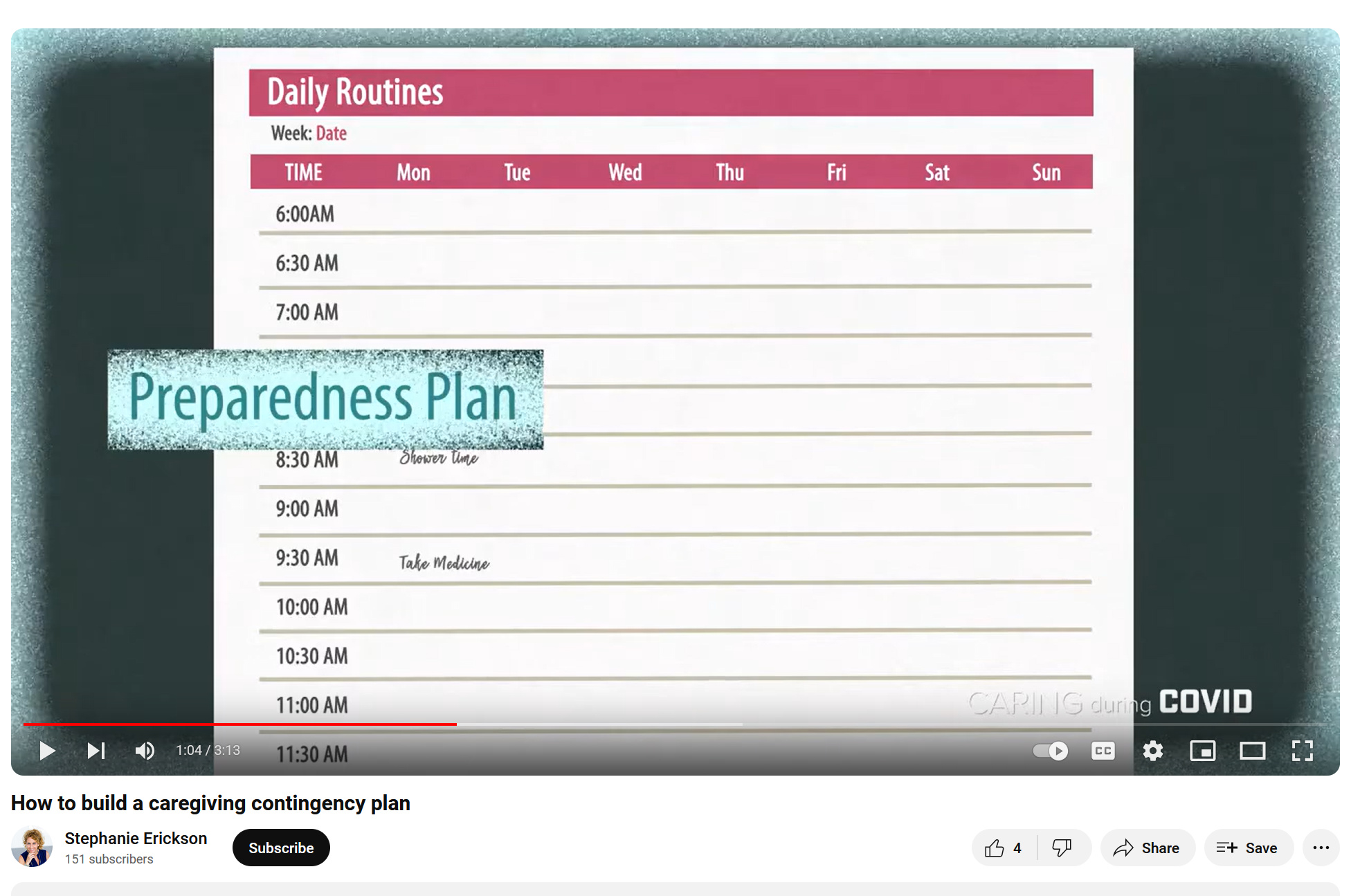What’s Your Back-Up Plan?

Caregiving can be a full-time job, requiring a lot of effort and dedication. What happens when the primary caregiver becomes ill or has other responsibilities that require their attention? In situations like these, having a contingency plan in place can make all the difference.
In a recent conversation with a caregiver consultant, we discussed how challenging caregiving can be, especially when the caregiver themselves faces personal obstacles. It’s essential to recognize that caregivers need to care for themselves as well, and having a plan in place for unexpected situations is a crucial part of self-care.
A contingency plan can be as simple as identifying a friend or family member who can step in when the primary caregiver is unavailable. Having a backup care plan can provide peace of mind and help alleviate stress.
I watched this helpful video [https://youtu.be/g0mnQoEydyo?si=6shhZ1S4q_aCzsgs] by Stephanie Erickson and heard:
“Caregivers should have a contingency plan. Some kind of back-up plan to put into action just in case they fall ill or their loved one gets sick. So where do you start? Create a daily routine map that explains what you do each day to take care of your loved one. Include all categories from personal care delivery such as bathing dressing and toileting your grocery shopping and making meals to administering medication to helping someone stand up or move around the home. Include less regular activities such as paying bills picking up medication from
the pharmacy attending medical appointments and arranging for personal matters such as air cuts and manicures. Write down all of your loved ones doctors names, specialties and contact information. Put the appointment calendar in one location and always keep it there write down all of the monthly financial commitments and your process to make the payments…”
What’s your contingency plan?
Simplify Caring App is designed for this. Important info, all in one place. To share it, invite a new team member in. Simple.


